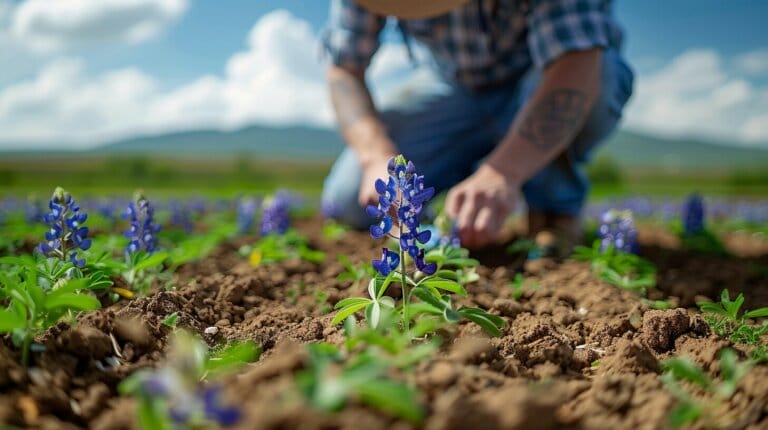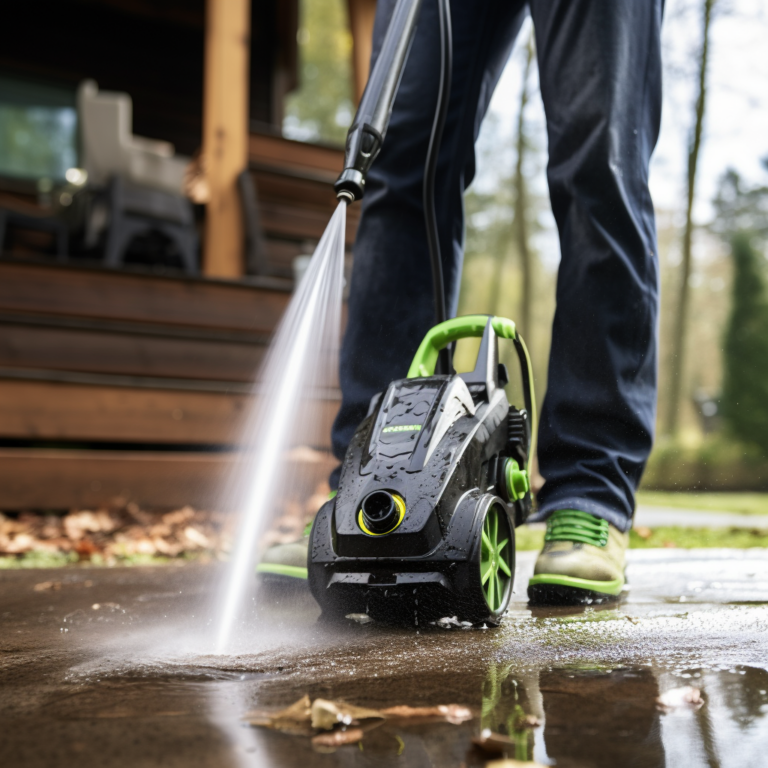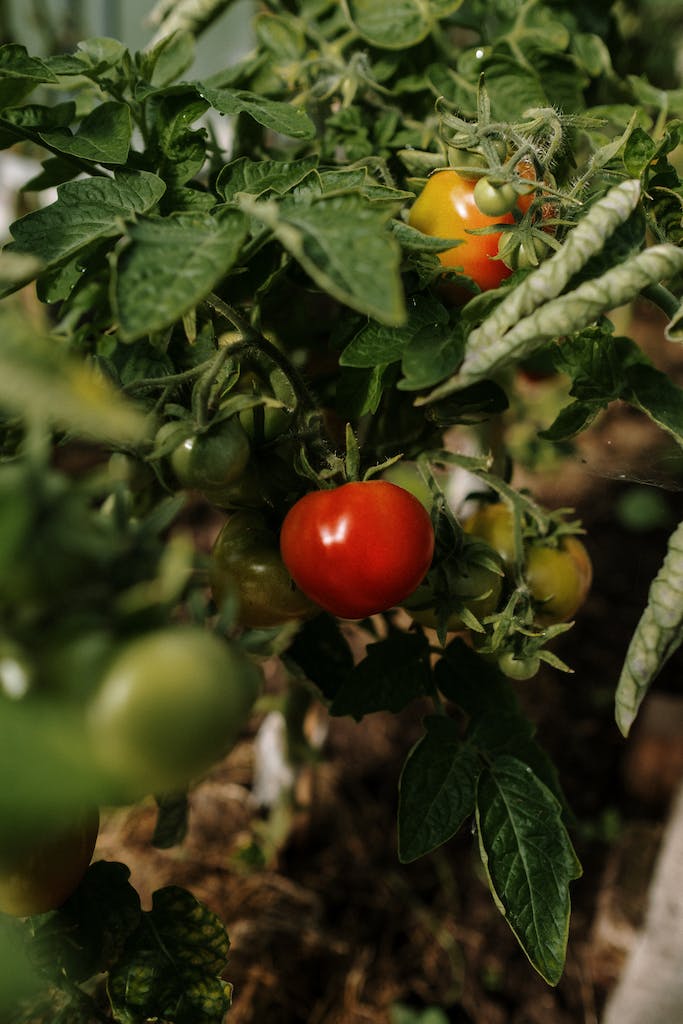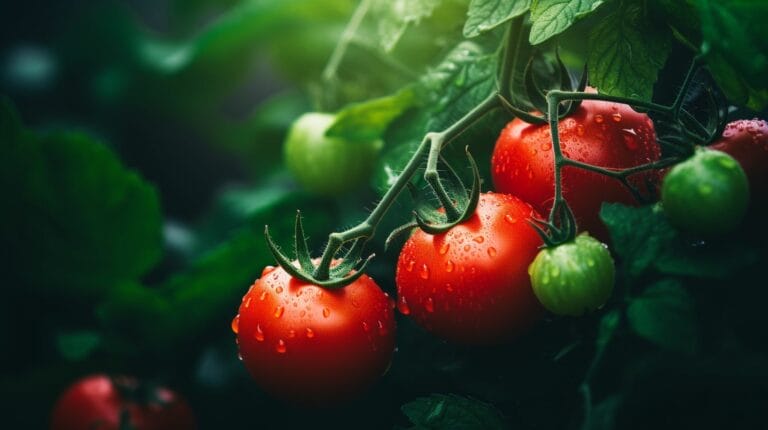Exploring the world of gardening can occasionally resemble steering through a field filled with explosives. I’ve witnessed robust-looking tomato plants unexpectedly displaying brown, curled leaves – such an annoyance!
In this article, I will unravel the mystery behind these symptoms and arm you with preventative measures and treatments.
Let’s turn your garden from a battlefield into a lush oasis together.
Key Takeaways
- High or low temperatures, inadequate watering, and poor nutrition are physiological stress factors that can lead to tomato leaf curl.
- Environmental conditions such as high temperature, low humidity, excessive rainfall, and poor soil drainage can lead to browning, curling, spots, and yellowing of tomato foliage.
- Nutrient deficiencies, caused by lack of appropriate fertilizer, can result in brown tips, leaf death, and overall poor foliage health.
- Diseases like Septoria Leaf Spot, Bacterial Leaf Spots, Fusarium Wilt, and Tomato Viruses such as Tomato Yellow Leaf Curl Virus, Tomato Mosaic Virus, and Tomato Spotted Wilt Virus can cause brown spots, streaks, curling, and drying up of tomato foliage.
Identifying the Root Causes of Tomato Plant Leaves Turning Brown and Curling
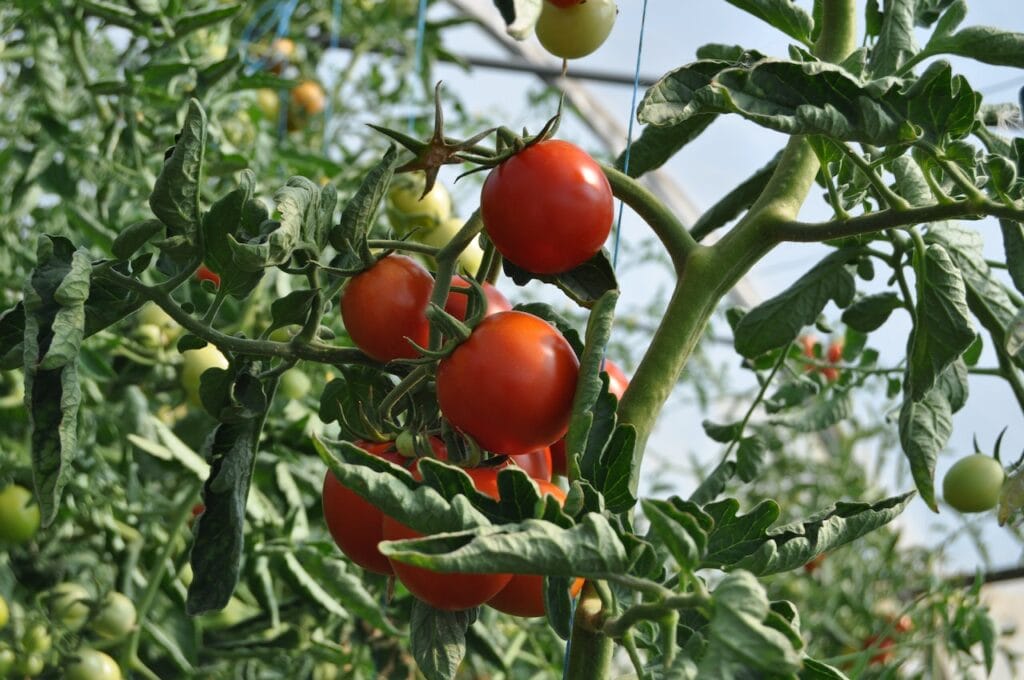
I will examine the physiological stress factors leading to tomato leaf crinkles in today’s discussion.
I’ll also explore how different environmental conditions can impact the health of our tomato plants, mainly focusing on what happens to their leaves.
Lastly, we will delve into how nutrient deficiencies play a significant role in issues related to tomato leaf health.
Understanding the Physiological Stress Factors that Cause Tomato Leaf Curl
You’ve got to understand that physiological stress factors like temperature extremes, improper watering, and nutrient deficiencies can cause your tomato leaf to crinkle. To master the causes of tomato leaf curl, consider this:
- High or low temperatures
- Inadequate watering
- Poor nutrition
With this understanding, you’ll notice when your tomato plant foliage or leaves turn.
Now, let’s transition into recognizing the impact of environmental conditions on tomato foliage or leaves.
Recognizing the Impact of Environmental Conditions on Tomato Leaves
Recognizing the impact of environmental conditions on your garden crops can significantly increase their overall health and productivity. Particularly in tomato plants, leaf complications such as leaves changing to brown and curling can clearly indicate unfavorable environmental influences.
| Tomato Leaf Problem | Environmental Condition | Impact |
| Browning Leaves | High Temperature | Reduced Photosynthesis |
| Curling Leaves | Low Humidity | Water Stress |
| Spots on Leaves | Excessive Rainfall | Fungal Infection |
| Yellowing Leaves | Poor Soil Drainage | Root Rot |
Now, let’s turn our attention to evaluating the role of nutrient deficiencies in tomato leaf complications.
Evaluating the Role of Nutrient Deficiencies in Tomato Leaf Problems
Let’s delve into how nutrient deficiencies can cause issues with your crops, particularly affecting the health of their foliage.
- Lack of appropriate tomato fertilizer may lead to nutrient deficiencies.
- These deficiencies often manifest as brown tips on tomato plant leaves.
- If unchecked, these leaves die off, compromising your harvest.
Achieving mastery requires understanding these connections and promptly addressing any nutritional gaps in your soil.
From Septoria Leaf Spot to Bacterial Leaf Spot: Diseases that Cause Tomato Leaves to Turn Brown
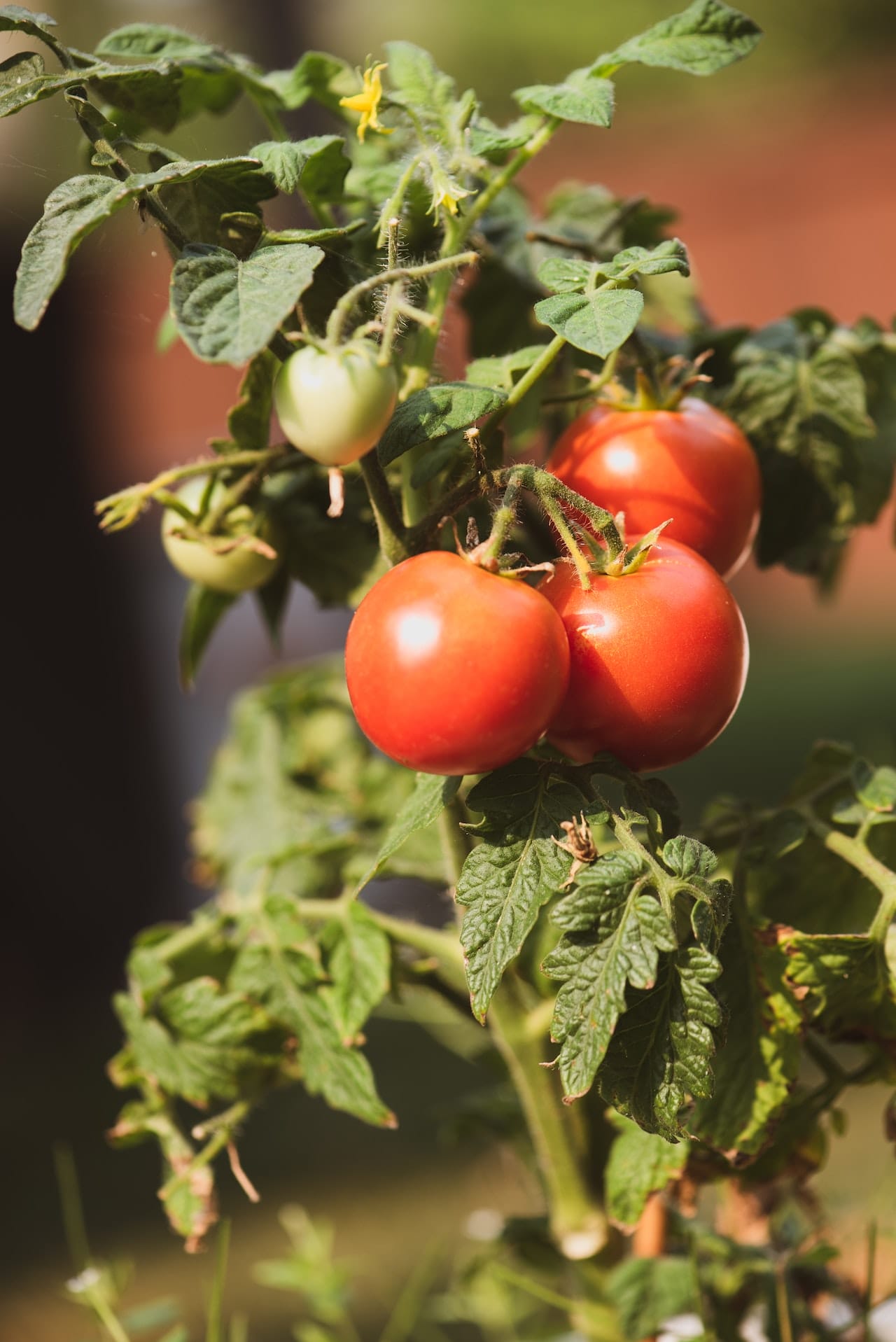
In our quest to maintain healthy tomato plants, we’ll now delve into the world of fungal and bacterial diseases that cause their leaves to change to brown.
I’ll guide you through identifying symptoms and treatments for one primary culprit, Septoria Leaf Spot, and help you understand more about battling those pesky bacterial foliage spots in your tomato plants.
We will explore other diseases affecting tomato foliage as we continue this enlightening journey.
Identifying Symptoms and Treatments for Septoria Leaf Spot
You’ve got to observe any small, circular spots on your tomato plant leaves, as they could be a clear indication of Septoria Leaf Spot. To master this tomato infestation:
- Identify brown lesions as the primary symptom.
- Examine the spots on the leaves, correlating them with affected leaves.
- Remove infected leaves promptly to prevent further spread.
Battling Brown Spots: Understanding Bacterial Leaf Spots in Tomato Plants
Bacterial Foliage spots are another garden menace worth understanding, as they can drastically affect your crops’ health. When the leaves on your tomato plant develop brown streaks, it’s time to start battling brown spots.
| Symptoms | Treatment |
| Brown Streaks | Copper-based sprays |
| Dark Spots with Yellow Halos | Pruning Infected Leaves |
| Wilting or Curling Leaves | Regular Watering and Fertilizing |
| Reduced Fruit Yield | Bio-control Agents |
| Premature Leaf Drop | Proper Spacing in Plant Beds |
Understanding bacterial foliage spots in tomato plants for optimum yield is vital.
Other Fungal and Bacterial Diseases Affecting Tomato Leaves
Aside from leaf spots, other fungal and bacterial diseases can wreak havoc on your crops. A common cause for concern is when tomato foliage curls, indicating an infected plant. Here’s a list of possible culprits:
- Powdery Mildew: Check the underside of leaves.
- Fusarium Wilt: Look out for leaf burn.
- Bacterial Canker: Watch for curled edges.
Understanding these diseases will level up your gardening game!
Unmasking the Tomato Viruses Behind Leaf Curling and Browning

As we delve deeper into tomato infestations and diseases, I’m about to unmask the viruses that cause leaf crinkling and browning.
We’ll recognize the threat posed by the Tomato Yellow Leaf Curl Virus, tackle the symptoms and solutions for the Tomato Mosaic Virus, and understand how the Tomato Spotted Wilt Virus affects your plants.
It’s a journey into plant pathology you will want to take advantage of as we strategize on maintaining healthier tomatoes amid these threats.
Recognizing the Threat of Tomato Yellow Leaf Curl Virus
It’s vital to promptly identify the symptoms of the Tomato Yellow Leaf Curl Virus in your garden to prevent significant damage. Recognizing the threat involves observing tomato plant foliage for curling, checking if leaves change to brown, and identifying other signs on infected leaves.
By understanding these symptoms, we can combat this virus more effectively.
Now, let’s transition into tackling another menace – the tomato mosaic infection or virus: its symptoms and solutions.
Tackling Tomato Mosaic Virus: Symptoms and Solutions
Let’s shift our focus to dealing with another pesky problem – the tomato mosaic infection, understanding its symptoms and finding practical solutions. Light brown streaks appear on infested leaves when this virus strikes, turning them brown or yellow. There may also be sap from leaves.
| Symptoms | Solutions |
| Light brown streaks | Remove affected plants |
| Infested leaves | Use disease-free seeds |
| Leaves turn brown/yellow | Apply appropriate pesticides |
| Sap from leaves | Proper sanitation practices |
Understanding the Effects of Tomato Spotted Wilt Virus on Your Plants
Now, let’s pivot from the Tomato Mosaic Virus to understand another threat – the Tomato Spotted Wilt Virus. This virus is notorious for causing tomato foliage to curl and dry up. Specifically, the undersides of the leaves may darken, and leaves on tomato plants turn brown and dry. Tomato plants are susceptible to this virus.
Next, we’ll delve into nipping this problem in the bud: preventing and treating brown, curling tomato foliage.
Nipping the Problem in the Bud: Preventing and Treating Tomato Plant Leaves Turning Brown and Curling
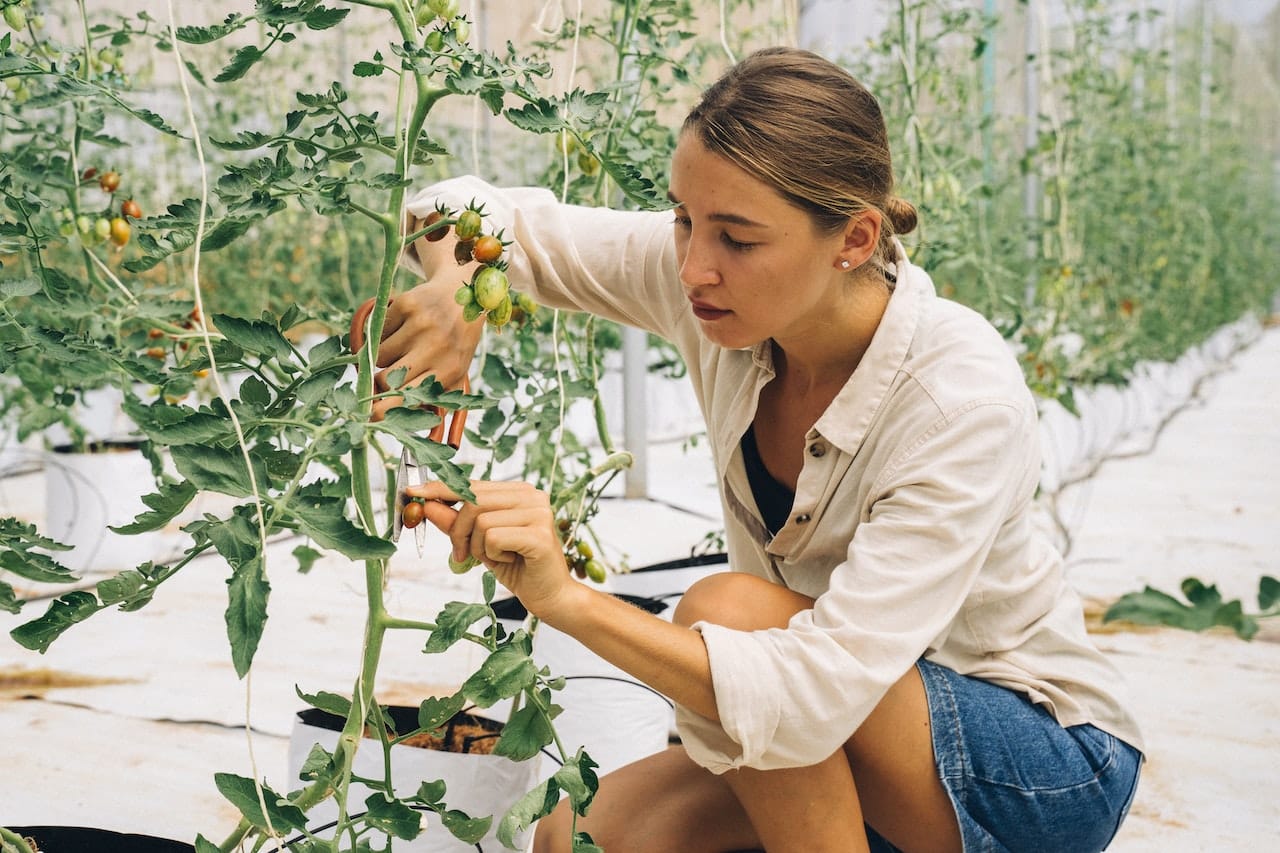
I’m ready to delve into the steps we can take to foster healthy growth and prevent tomato leaf complications right from the start.
We’ll also explore how to treat infected plants, from nutrient supplements that boost their health to more directed disease control methods.
And for those stubborn cases of leaf crinkling and browning that won’t back down, I’ll be diving into both organic and chemical treatment methods that could help turn things around.
Fostering Healthy Growth: Preventive Measures Against Tomato Leaf Problems
It’s essential to understand that preventive measures can help keep tomato leaf problems at bay. Proper watering, timely pruning, and appropriate fertilization are imperative.
Here are three steps to foster healthy growth and prevent issues like tomato plant foliage changing to brown and crinkling:
- Regularly water your tomato plants.
- Prune them promptly to remove potential causes of leaf crinkles.
- Use the right fertilizer to combat the reasons your tomato foliage is curling.
Treating Infected Tomato Plants: From Nutrient Supplements to Disease Control
You’ve learned that treating infected crops involves everything from nutrient supplements to disease control strategies.
When your tomato plant foliage starts changing to brown and crinkling, it’s a clear sign of infection.
Identifying why your tomato foliage is curling is the first step in treating infected tomato plants.
Mastering this will ensure a healthy harvest every season.
Adopting Organic and Chemical Treatment Methods for Persistent Leaf Curling and Browning
Adopting organic and chemical treatment methods can be your best bet for tackling persistent signs of disease in your crops.
Remember, tomato foliage may curl due to various reasons.
The edges of leaves browning might indicate a more severe issue causing tomato leaf crinkles.
Young tomato plants are particularly susceptible, so adopting organic and chemical treatment methods for persistent leaf crinkling and browning early on is vital.
When Home Remedies Aren’t Enough: Seeking Expert Help for Tomato Plant Problems
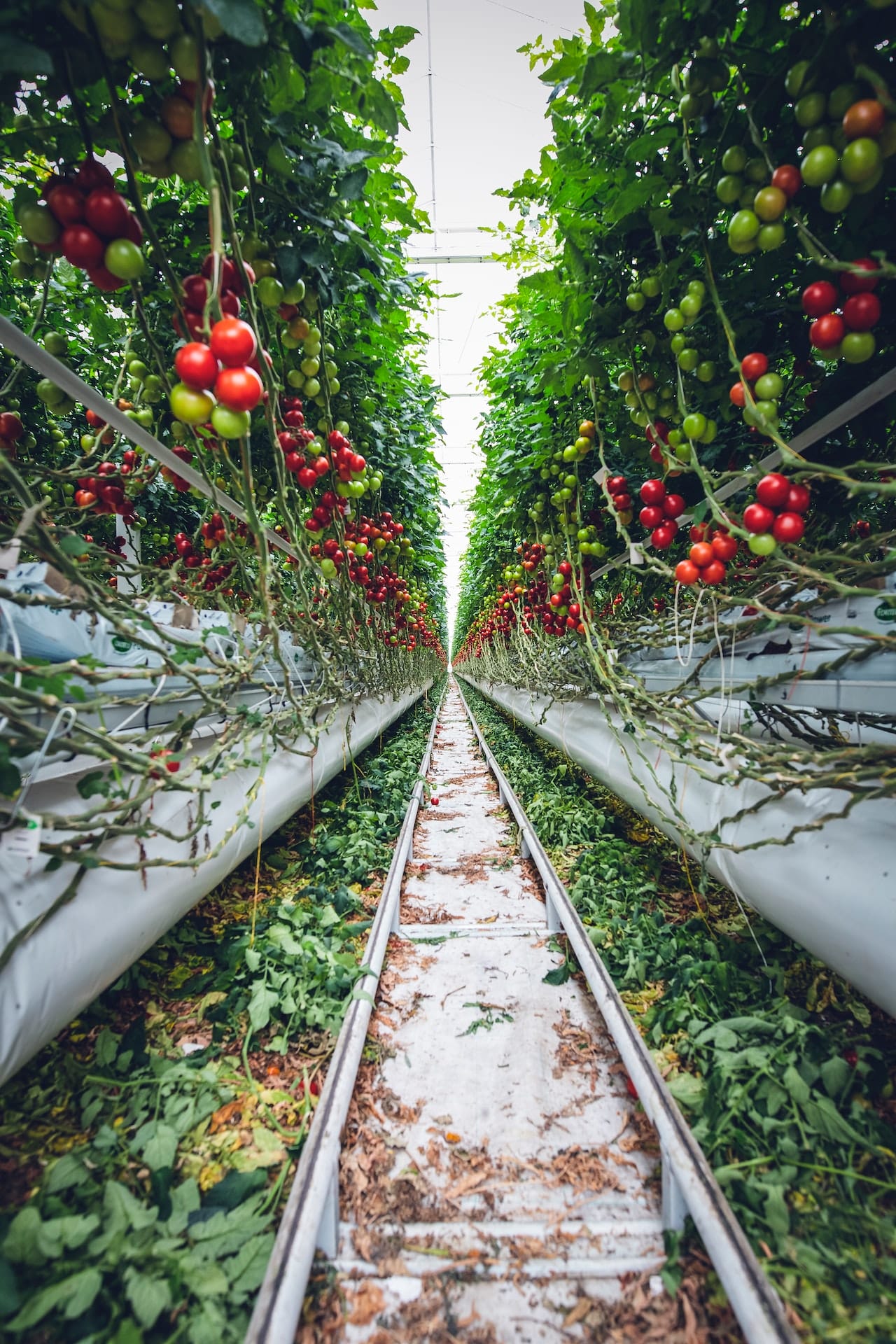
As a passionate gardener, there are times when I need to acknowledge that my tomato plants require more than just my care; they need professional attention. That’s when I turned to local agricultural extension services, an invaluable resource for dealing with tomato infestations and diseases.
In this discussion, we’ll explore how to recognize when expert help is needed and explore the various professional treatment options available for tomato plant diseases.
Recognizing When Your Tomato Plant Needs Professional Attention
Knowing when your tomato plant’s health has deteriorated beyond home remedies and needs a professional’s intervention is essential. Recognize when your plant needs attention:
- Tomato plant foliage turning light brown.
- Leaves curling upwards despite an otherwise healthy plant.
- Sudden changes in growth patterns or coloration.
Now, let’s transition into consulting with local agricultural extension services for tomato diseases.
Consulting with Local Agricultural Extension Services for Tomato Diseases
After identifying why your tomato plants are changing to brown and crinkling, getting expert help is crucial. That’s where consulting with local agricultural extension services for tomato diseases comes in.
They’ll determine if tomato-specific pathogens or other factors cause the curling tomato foliage. Leveraging their expertise will ensure you’re on the right track to restoring your plants’ health.
Exploring Professional Treatment Options for Tomato Plant Diseases
You’re now ready to explore professional treatment options to combat the diseases affecting your crops. When tomato plants become affected by tomato diseases, curling is often a symptom. It’s crucial to identify what could cause your tomato foliages
- Bacterial Diseases: These can also result in curled leaves.
- Pests or Viral Infections: Often cause severe leaf distortions.
These are the usual culprits we’ll address together next.
Frequently Asked Questions
What Are the Optimal Growth Conditions for a Tomato Plant to Prevent Leaf Browning and Crinkling?
To prevent leaf issues, I ensure my tomato plants receive full sun, adequate watering without being soggy, and a balanced fertilizer. A temperature of 65-85°F is ideal. Regular pruning also promotes healthy growth.
Can the Browning and Crinkling of Tomato Plant Foliages Affect the Quality and Taste of Tomatoes?
Yes, the browning, crinkling, or curling of leaves can affect tomato quality and taste. In my garden, I’ve noticed less flavorful tomatoes from stressed plants. It’s essential to maintain healthy foliage for optimal production.
How Does the Season or Climate Affect the Likelihood of Tomato Plant Foliages Turning Brown and Crinkling or Curling?
In my experience, both season and climate significantly influence this issue. Cold, wet conditions increase the likelihood, while warmer, drier climates lessen it. It’s a balancing act of temperature and humidity control for plant health.
Are Certain Varieties of Tomato Plants More Susceptible to Leaf Browning and Crinkling Than Others?
Indeed, some tomato varieties are more susceptible to leaf issues. Heirlooms, for instance, often lack the disease resistance of hybrids. So yes, it’s not just your gardening skills—it’s also about the plant type!
What Are Some Signs of Recovery to Look for After Treating a Tomato Plant for Leaf Browning and Crinkling?
After treating this issue, I’d look for new growth with a healthy green color. Leaves should stop curling and browning, and the plant should begin producing plump, vibrant tomatoes again.
Conclusion
Well, we’ve reached the end of our tomato tale. We’ve unmasked diseases and confronted viruses. We’ve also shared solutions for those pesky brown and crinkling leaves. Sometimes, you must call in the cavalry when home remedies aren’t cutting it. Remember, it’s not admitting defeat; it’s just getting a little reinforcement to restore your tomato plants to their full glory.



